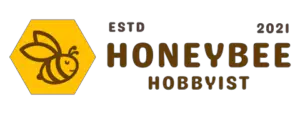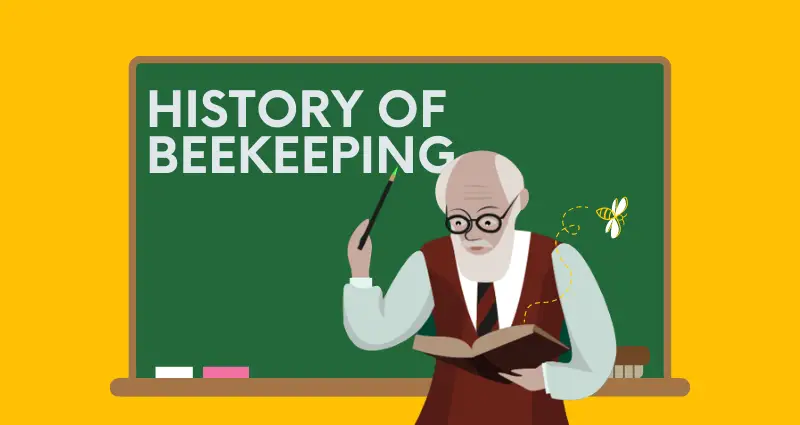The history of beekeeping dates back to prehistoric times using pottery vessels. Egyptian art depicts beekeeping as a common practice as well. It's safe to say that beekeeping is one of humanities oldest agricultural traditions and has had a global impact for millenia.
As pollinators, honey bees play a vital role in growing crops, wild plants, trees, and flowers. These plants and trees provide food and shelter for various creatures on the planet.
Bees enable diverse species to coexist by sustaining complex, interconnected ecosystems through crop pollination. Now you know why these winged buzzers are always so busy!
The art of beekeeping, also known as apiology, refers to humans’ maintenance of colonies of bees. The caretakers provide a supportive environment for bees to do what they naturally do.
Throughout history, ancient civilizations, religions, and secular organizations have all viewed bees as important symbols. So let’s learn more about the history of beekeeping to appreciate these creatures a little bit more.
When And How Did Beekeeping Start?
Beekeeping is one of the oldest recorded means of food production. But do you know what’s more interesting? The first beekeepers of the world weren’t ‘keepers’ at all; they were instead foragers of wild honey.
The Cueva de la Araña caves near Valencia, Spain, bears the earliest beekeeping evidence. It houses a Mesolithic rock painting dating to 9000 BCE. The cave painting depicts a human figure climbing a tree to gather honey from a beehive. The scene in the picture has a few bees fluttering around the figure.
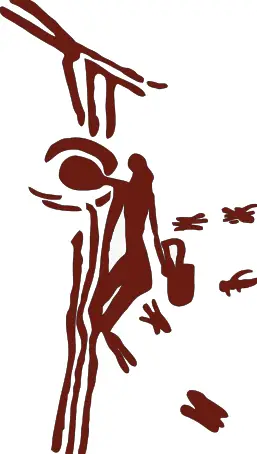
The practice of domesticated beekeeping developed in ancient Egypt around 2500 BCE. Roman writers like Virgil, Columella, Varro, and Gaius Julius Hyginus discussed this concept.
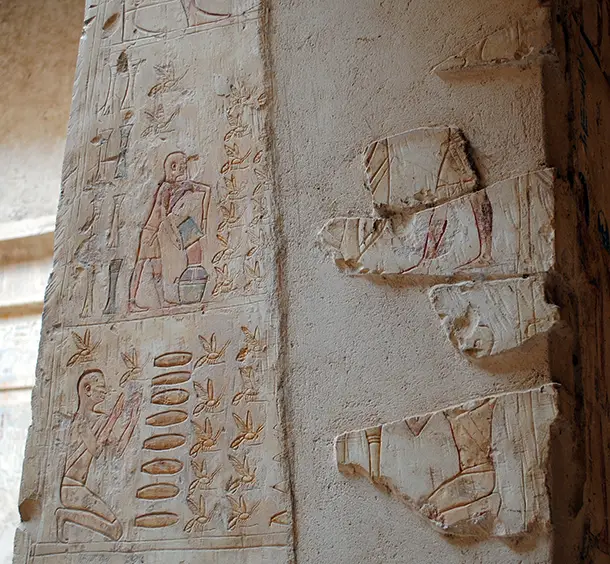
Other evidence includes the depictions of honeypots and beehives on the walls of the Sun Temple of Nyuserre Ini, the ancient Egyptian pharaoh. Some of these depictions also showcased beekeepers using smoke to calm bees. A practice still used today.
Archaeologists have also uncovered intact straw and clay hives in a few sites of Israel. These are presumably from 900 BCE.
In his book Historia Animalium, Aristotle also mentioned beekeeping and bees’ behavior. Around 500 BCE, the Chinese philosopher and statesman Fan Li drafted his treatise, ‘Golden Rules of Business Success.’ Here, he touched upon the benefits of a wooden hive box.
In the earliest days, beekeepers crafted beehives out of hollowed-out stumps of trees and fallen logs where honey bees would naturally swarm and build their colonies. To harvest the honey, the caretaker would clear out the hive of bees and burn it. They’d then squeeze the honeycombs to extract the golden syrup.
A. mellifera, the European breed of the honey bee, is the most common domesticated type. The only domestic variant is A. cerana, known as the Asiatic or eastern honeybee.
It’s a species of small honey bees found in Asia’s southeastern and southern parts. This breed makes its nests in cavities but can also flourish in artificial hives on a smaller scale.
Beekeeping Historic Timeline
The practice of beekeeping has been in progress since prehistoric times. But there are no specific details and evidence of its development over the centuries. If you have to create a proper timeline based on reliable data, you can trace the history of beekeeping from the 1500s.
Here’s a short timeline of notable beekeeping events:
| 1538 | The Spanish imported the first colony of honey bees to South America. |
| 1621 | In a letter addressed to the Virginia Governor, the Virginia Company of London states that they’re sending provisions, including beehives, in a ship named Discovery to help the colony survive. |
| 1682 | An English travel writer, George Wheler, discovers Greek beehives. The prototype of the modern hive with movable frames. |
| 1700 | As claimed by Claire Preston in her book Bee, it was only in 1700 that the idea of bees producing honey with nectar collected from flowers came to light. Before this, people believed that honey was a readymade syrup found in flowers gathered by bees. |
| 1730 | Colonizers in America set up over 170,000 beehives, challenging the price of hogs and sheep. |
| 1779 | The Continental Congress in the United States adopted the image of a beehive as the logo for its currency. |
| 1785 | Thomas Jefferson writes on the import of honey bees to America in his book Notes on the State of Virginia. He mentions how Native Americans referred to bees as ‘white man’s fly’ to ward off approaching invaders. |
| 1838 | Polish apiarist Johann Dzierzon devises the first beehive with movable combs. It allowed the handling of individual combs without affecting the hive’s structure as a whole. |
| 1851 | L.L. Langstroth, the father of American beekeeping, modifies Dzierzon’s design to create a completely movable frame. |
| 1890 | William Broughton Carr, an English beekeeper, invents the WBC beehive, a double-walled hive with a pitched roof. It contains wooden boxes to hold the frames of brood and honey. |
| 1941-1945 | Beekeepers are exempted from military service as beeswax becomes crucial for rustproofing WWII war vehicles. |
| 1984 | Burt’s Bees, a line of cosmetic products formulated with beeswax and honey, gained international success. |
| 1988 | Several states in the U.S. adopt bees as their official insect. The national postal service creates a stamp with the image of a bee. |
| 2009 | Michelle Obama rears honey bees in her vegetable garden at the White House. She did so to encourage pollination and prevent the decline of the bee population. |
Hive Types Throughout History
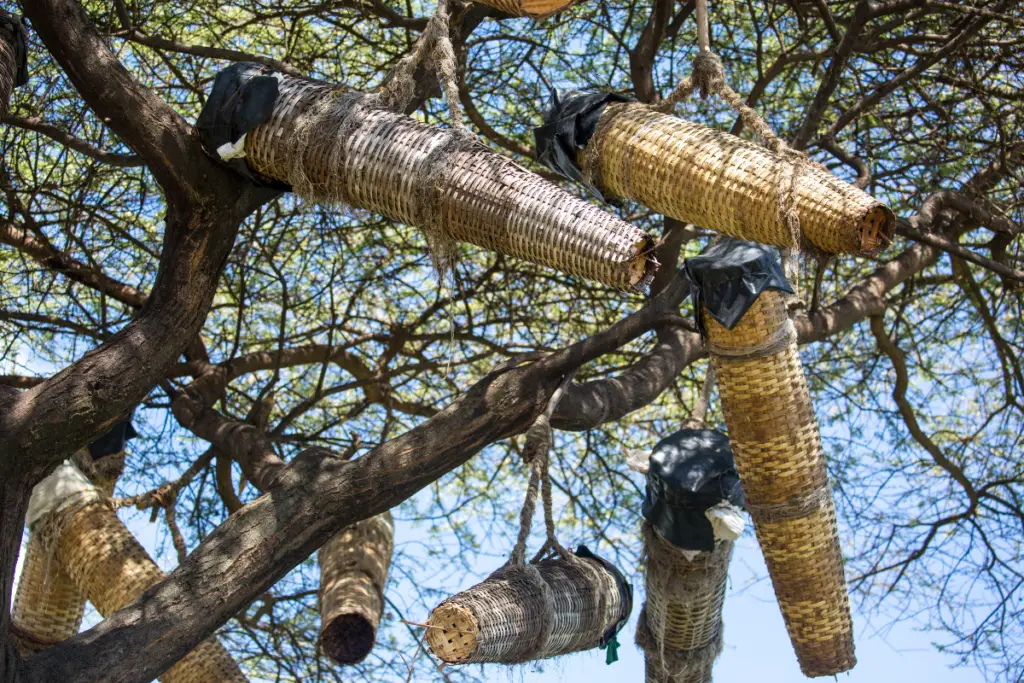
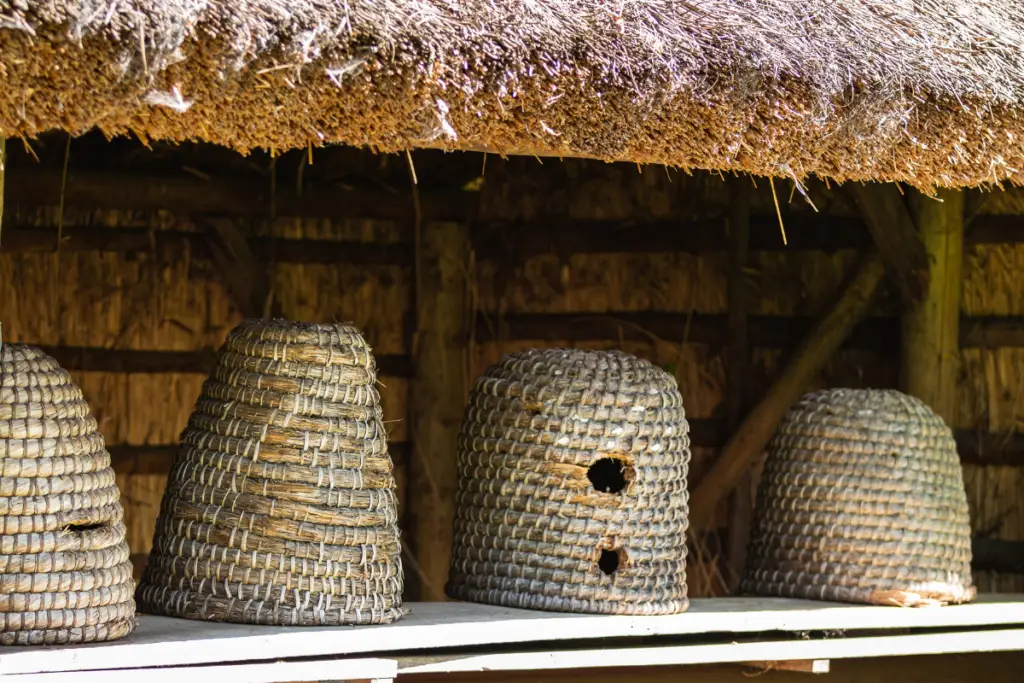
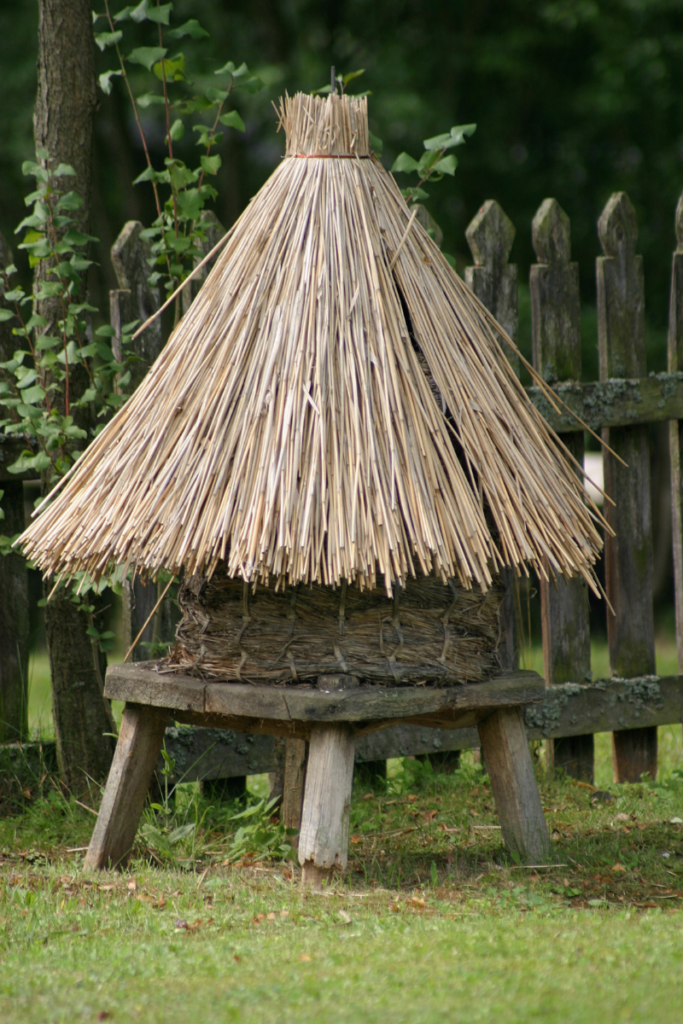
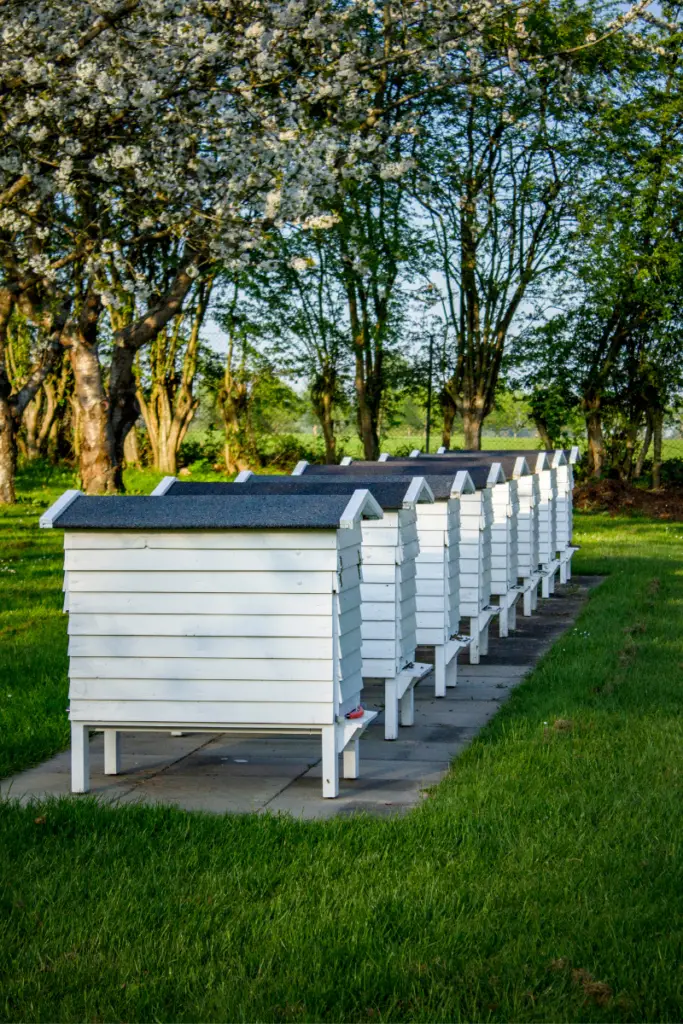
Beekeeping In Europe
European honeybee keeping reached its peak during the Middle Ages when honey and wax became essential commodities for trading.
Christian religious practices constantly required wax, while honey was the only widely accessible sweetener as sugar imports were yet to expand. Beekeeping flourished to meet this demand. People reared bees in hives made from logs of trees, straw, wood, and wicker.
Beekeeping was a thriving business in rural areas of the continent. On the one hand, peasants reared bees on a small scale for local trading. Beekeeping became a legit profession where people specialized in maintaining colonies of bees for large-scale honey production. These professional beekeepers exported their products to various parts of the world.
Written records indicate that beekeeping took place in diverse ecological settings. It thrived in Prussia and Livonia of northern Europe and some regions in the southern zone. These include Alentejo and Beira in Portugal, Provence in France, the Kingdom of Valencia, and the Principality of Catalonia.
A striking thing about these regions is that they fall under diverse climate ranges while also representing different socio-economic setups. As a result, beekeepers from these parts of Europe resorted to varying forms of beekeeping to suit their environments.
Tree hive design became popular in eastern Germany, stretching through Bavaria and Poland to the Ural Mountains. These regions were heavily forested, allowing swarms to naturally travel from tree to tree.
Beekeepers manufactured hives from hollowed-out spaces in large tree trunks, protecting the insects in extreme weather conditions. Skep hives fared better to the west and south of this zone, covering Iberia and the Mediterranean region. These areas were relatively densely populated and featured a more diverse landscape.
Those who reared bees relied on cork oak to build lightweight and portable hives, thus protecting the creatures from the summer heat. Due to the mild winters and warm weather, this zone was conducive for beekeeping. The climate also supported the growth of flowering plants in abundance, providing bees with enough nectar to produce honey.
As studies suggest, beekeeping was a significant component of estate and late management in Europe of the Middle Ages. Besides honey, the continent witnessed a growing demand for wax. With the proliferation of Christian services, heavy emphasis was on feasts related to Christ and Mary.
The use of wax candles was common for these activities, which led to a rise in the need for specialized beekeeping all over Europe.
Beekeeping In America
Beekeeping in North America began with the entry of the colonizers. American colonists imported honey bees, the first being European dark bees. Gradually, they started bringing in other breeds such as Carniolan honey bees, Caucasian bees, and Italian bees.
Colonizers in Australia and New Zealand followed the same suit.
Moving on to the mid-1800s, it was Lorenzo L. Langstroth who extensively studied the science of beekeeping and developed Langstroth hives that used innovative movable frames. For his contribution, Langstroth is regarded as the ‘father of American beekeeping.‘
Carrying forth his passion, Langstroth wrote a guidebook on beekeeping titled Langstroth on the Hive and the Honey-Bee: A Bee Keeper’s Manual. Through his writing and innovations, Langstroth paved the way for beekeeping to thrive and for America’s agrarian society to flourish.
Notably, Langstroth wasn’t the only person closely associated with bees in America. One can’t trace the history of beekeeping in the nation without referring to Amos Root. Popularly called the Bee Man of Ohio, Root operated a supply business and a newsletter titled ‘The Gleanings in Bee Culture.’
Amos Root is credited with innovative techniques to manufacture beehives and beekeeping equipment. One of his most successful and popular inventions was a technique of honey harvest without destroying the beehive.
Most beekeepers were primarily farmers who took up the practice as hobbyists in their rural homes. By 1899, the U.S. produced approximately thirty-one thousand tons of honey and more than 880 tons of beeswax.
This number only kept increasing till the 1970s.
In the 1980s, parasites like tracheal mites, small hive beetles, and varroa mites wreaked havoc on hives across the country. By the 1990s America saw a complete downfall of the beekeeping industry.
Beekeepers were not equipped to deal with the problem of parasites, which led to a significant decline in beekeeping in the 21st century. The production of honey now averaged only about 100,000 tons per year.
In recent times, habitats conducive to beekeeping have been gradually shrinking and interest in the hobby has also diminished.
Beekeeping In The Modern Day
Coming to the modern era, the art and science of beekeeping have by now evolved a great deal. Natural beekeeping is currently in vogue in various parts of the world. If allowed to swarm and breed naturally, bees would double each year.
The current century saw modern beekeeping equipment that made rearing bees easier. These include the innovative techniques of Dzierzon, Langstroth, Dadant, and Root that helped bees build natural honeycombs.
You might even come across high-tech gadgets to maintain beehives and harvest honey in the coming times. But that’s for time to tell!
Meanwhile, the more important message to keep in mind is that a modern beekeeper does not know how to operate his apiary but co-operates with his bees.
